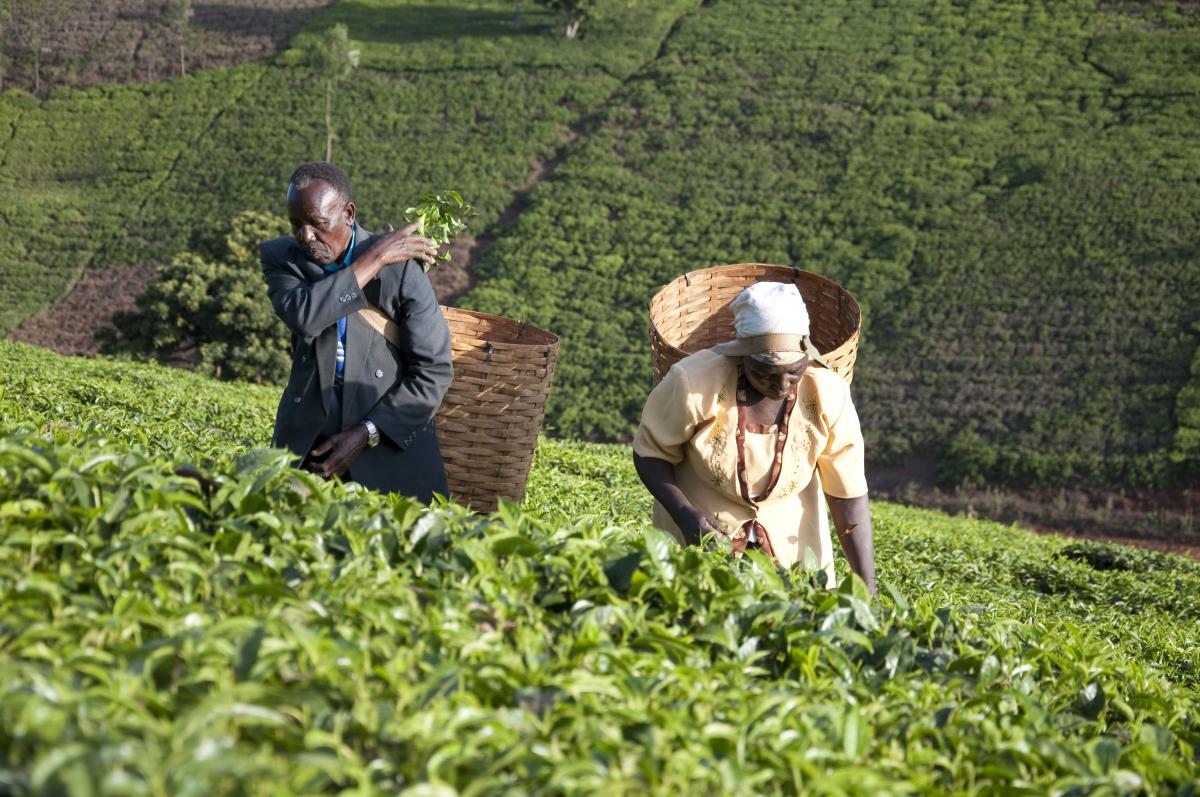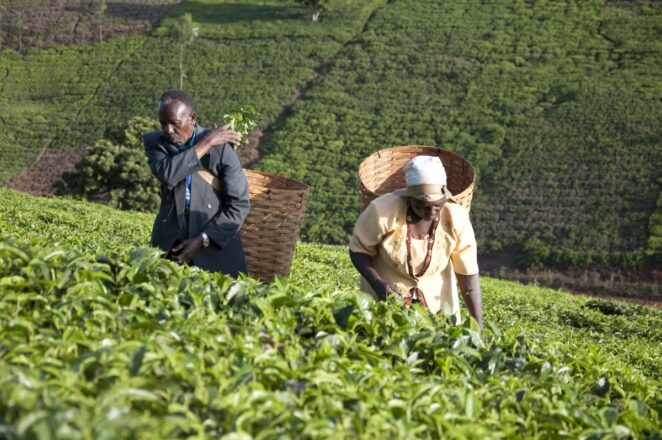Case-study /
Increasing Community Resilience to Drought in Sakai, Makueni District, Kenya


Photo: Institute for Culture and Ecology (ICE)
Adaptation context
Lying in south-central Kenya, Makueni District is characterised by sharp contrasts between the low-lying, sparsely populated grasslands in its southern reaches, the volcanic Chyulu Holls along its southwest border, and the more densely populate, resource-rich rolling hills found in its north. In this minty semi-arid district, rainfall patterns are highly variable in terms of their onset and duration. Drought and food security are always a worry. A swelling population, land fragmentation and the migration of people into the sparser, drier lowlands, all contribute to Makueni’s considerable vulnerability to current climate variability and long-term climate change.
Project overview
Drought events associated with climate variability and climate change have become more pronounced in Kenya in recent years, particularly affecting its agricultural production—the main livelihood activity of most Kenyans. By working with the small community of Sakai sub-location in the mixed farming area of Mbooni East District (formerly part of Makueni District), the Kenya pilot project implemented actions to reduce the vulnerability of the farming community to current climate variability and long-term climate change. Undertaken as part of the broader ACCESA project, this pilot project aimed to increase household food security, reduce poverty through improved livelihoods, and facilitate the integration of adaptation to climate change into policies related to disaster management and the sustainable development of arid and semi-arid lands.
Main messages
The following recommendations were made based upon the project’s outcomes:
1. Improve access to meteorological information at the local level to help farmers cope with increasingly unpredictable weather conditions.The increasing variability in weather conditions in Kenya requires farmers to be trained in its implications for the onset and cessation of rains, the types of seeds to be planted and other agronomic practices. This requires improved access to seasonal weather forecasts presented in a language understandable to the farmers. The Kenya Meteorological Department needs to produce detailed weather forecasts to the sub-location level. This will require establishment of more weather stations. Once the forecast has been produced, it should be made available to the ministry in charge of agriculture for distribution to agricultural extension workers in all parts of the country, who in turn will distribute it to the farmers (through agronomic brochures, radio and other electronic and print media broadcasts). Coordination of these activities should be exercised by the Ministry of Environment and Mineral Resources.
2. Increase the availability of drought-tolerant seeds in semi-arid districts and expand the emerging distribution network in order to provide quality drought-tolerant seeds to more farmers.The Sakai pilot project demonstrated the need to give greater priority to promoting the use of indigenous crops appropriate for marginal areas and encouraging local (including community-based) production of good quality seeds. The potential role of the Kenya Agricultural Research Institute in supporting communities to produce quality seeds suited to particular local areas has been demonstrated in Sakai, and should be continued. As well, there is a need to promote and support seed bulking and storage efforts in areas where poverty is high and communities cannot afford to buy commercial seeds.
3. Improve agricultural extension capacity in Kenya and raise the capacity of district officers to access sufficient information about climate change, its potential implications and actions they can promote to reduce vulnerability in the agricultural sector.The pilot project demonstrated the critical role of extension workers in supporting adaptation to climate variability and change. As these workers should be familiar with and knowledgeable about climate variability and change, the syllabus for training of extension officers should include a required course on this topic. The training of such officers should be continuous, as climate change scenarios vary from time to time. Furthermore, research on climate change should be encouraged at all higher institutions. The coordination of research data and experiences should be tallied by the Ministry of Environment and Mineral Resources.
Impacts and results
Through its activities at the field and policy level, the Sakai pilot project has continually striven to enhance local agricultural production and reduce poverty through livelihood diversification. In doing so, it has increased capacity to adapt to the projected impacts of climate change. By improving access to downscaled weather information, drought-tolerant seeds, water resources and microcredit, the project is strengthening the coping capacity of community members, particularly women. These benefits became more tangible during the 2009 drought. In particular, the sand dams constructed by the project proved to be reliable sources of water. Their success in fact demonstrates the need for a significant scale-up of efforts to construct additional and more diversified water sources, as the number of people and livestock attracted by the sand dams led to greater competition and some conflict between users.
Through its policy engagement activities, the project is also helping to spread its benefits to a much larger population. For instance, based upon the project’s experiences, Kenya’s Ministry of State for Development of Northern Kenya and Other Arid Lands now requires all 28 of the country’s ASAL districts to receive downscaled weather forecasts as part of its drought early warning activities. Changes such as these are helping to increase the capacity of smallholder farmers across the ASALs of Kenya to adapt to drought now and in the future.
Lessons learned
-
The recent drought in Kenya tested the measures introduced by the project and their potential usefulness in adapting to long-term climatic changes. It highlighted the need for the Government of Kenya to promote an integrated drought management system that links together: • the distribution of a diversified mix of locally appropriate, traditional seeds at the community level; • improved access to water resources (such as sand dams) and water conservation practices (such as drip irrigation systems); and • the diversification of livelihoods through promoting and using drought tolerant crops, training in small-scale business management, and providing micro-credit.
-
From its inception, the Sakai project has brought together national and district government officials, academia and enthusiastic community members, creating an environment for mutual learning and knowledge sharing. As well, the direct involvement of district and national government officials in the project has led to continual opportunity to identify and promote policy changes, creating the potential for significant up-scaling of benefits.
-
By bringing together meteorologists, agricultural extensions officers, seed and livestock specialists, and farmers, the project has demonstrated a process for generating and delivering the information farmers need to make informed planting decisions that takes into consideration the uncertainty associated with rainfall projections. Improving access to meteorological information at the local level and communicating this knowledge to farmers in a manner that is understandable to them helps farmers cope with increasingly unpredictable weather conditions.
-
Critical to the success of the Sakai pilot project has been the involvement of the ALRMP and district agricultural officers – demonstrating the critical role of agricultural extension services in preparing farmers for the impacts of climate change. There is a need to improve agricultural extension capacity in Kenya and other developing countries, and to raise the capacity of district officials to access sufficient information about climate change, its potential implications and actions they can take to reduce vulnerability in the agriculture sector
Lessons learned through these activities were integrated into the regional activities of the Arid Lands Resource Management Project. They also were used to influence the development of Kenya’s National Disaster Management Policy and the policies of Kenya’s Ministry of Northern Kenya and Arid Lands.
- Download project report here
- More information for better planning
- Preparing for Climate Change in Kenya Early Outcomes of the Project “Increasing Community Resilience to Drought in Makueni District’ December 2008
- Adapting to drought caused by climate change- A Farmers’ Handbook
- Enhancing resiliency to drought in Kenya’s arid and semi-arid lands
- Project presentation slides
